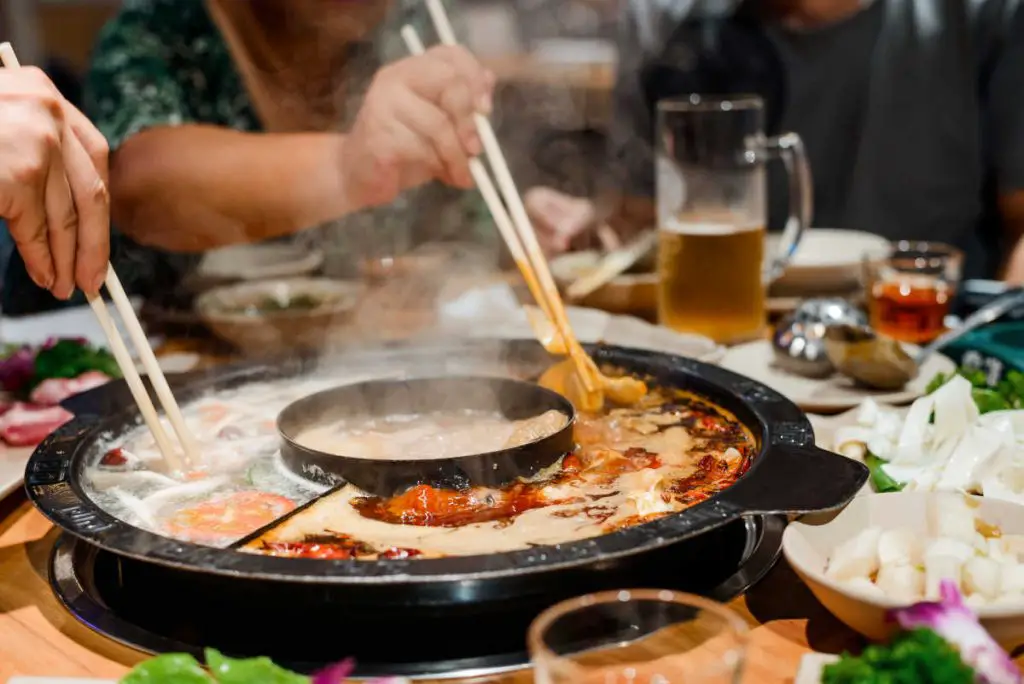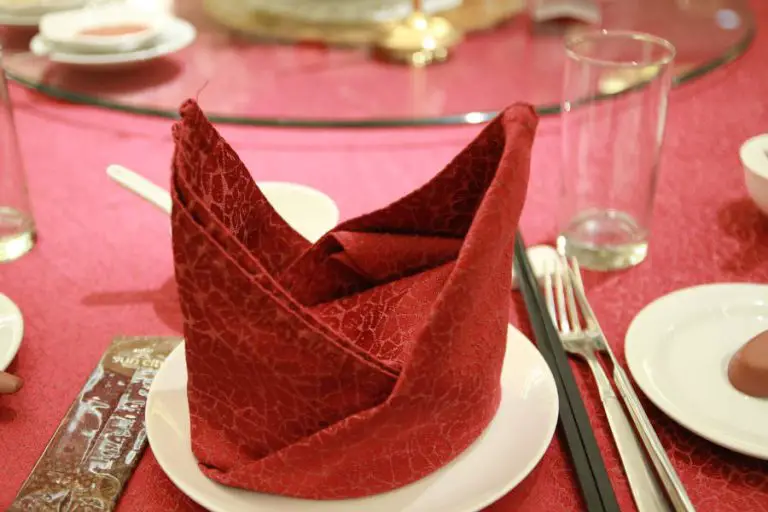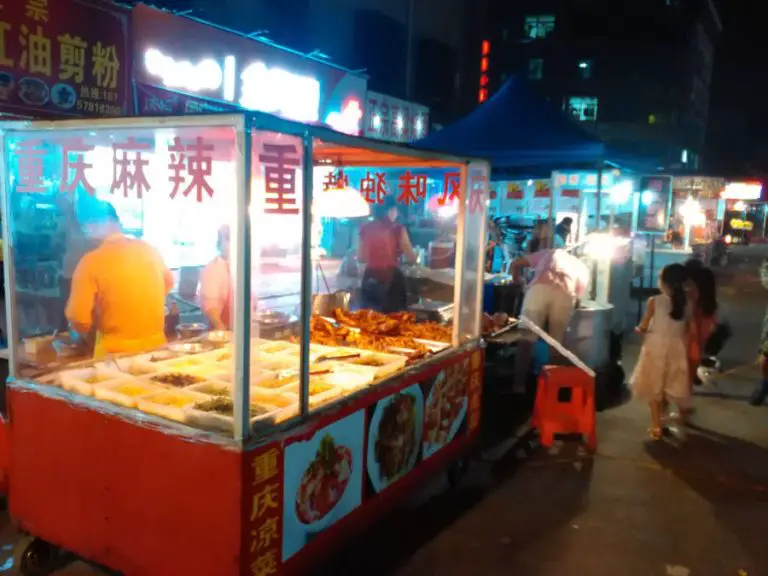Huo Guo 火锅, also known as hot pot in English, is a widespread Chinese communal cooking style that exemplifies the spirit of interactive eating. Huo Guo, which means “fire pot” in Chinese, refers to the meal’s main component, a pot of rich broth simmering steadily over a heat source below.
The focal point of the meal is the pot in the middle of the table, where people stew a variety of raw ingredients—meat, fish, vegetables, tofu, and starches—in the simmering broth. After the food is cooked, it is dipped in sauces that have been made especially for it to bring out the flavors.
Hot pot, unlike other Chinese food styles that preserve a clear boundary between the chef and the diners, is distinguished by an eat-as-you-cook method that encourages active involvement from everyone at the table. Huo Guo represents the idea of communal dining, a notion that is slowly gaining appeal in Western restaurants.
Hot pot has regional variances throughout China, but the basic idea stays the same. It has many different ingredients and a flavorful broth, but its charm also rests in its ability to be customized. Since everyone can make their own dipping sauce, each person may enjoy their own special flavor combination.
Hot pot is similar to fondue, with the main difference being the use of delicious soup stock instead of cheese or hot oil.
Hotpot is noteworthy not merely for its culinary allure but also because it is loved by Chinese people everywhere and is gradually becoming acceptable in a wider range of cultural conditions. Having the ability to create a welcoming and comfortable environment invites people to gather, cook, dine, speak, and unwind.
Whether at home or in a restaurant, hot pot is a beloved and enjoyable approach to sharing a meal with loved ones.
Chinese Hot pot History and origins
Hotpot has been around for over 1000 years, and China is considered the birthplace of hotpot. It is generally accepted that the hotpot tradition originated with Mongol warriors and riders who spent the night outside and ate dinner in a circle around a pot over a fire as a means to stay warm while still eating.
According to some stories, these riders even used their metal helmets for holding and heating the water because they didn’t have many other cooking tools with them when they were out and about and away from home.
Others contend that the hot pot was initially created by Chongqing boatmen who were looking for a quick and inexpensive method of cooking.
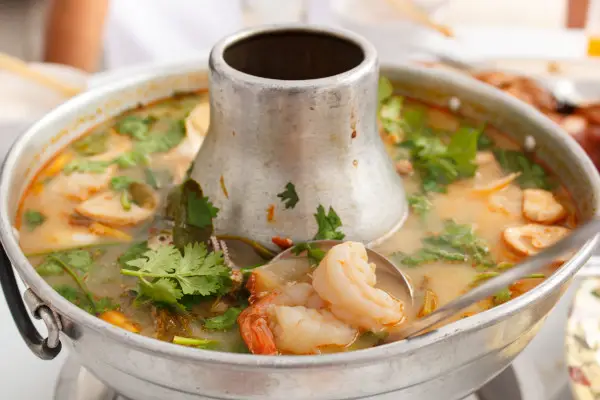
In spite of the numerous legends surrounding its origin, let’s examine the evidence.
The Zhou dynasty’s (1046–256 BCE) tripods may have been the first versions of the hot pot. Diners among the nobles each had their own bronze pot called ran lu (燃炉/燃爐)). The essential component of ran lu was a little burner with a small pot over burning charcoal.
A bronze hot pot was discovered while researching unearthed cultural artifacts from the Han Dynasty (206 B.C.E.–220 C.E.). Additionally, a fire boiler was discovered in Haihunhou Cemetery, the burial place of Liu He, Emperor of the Western Han Dynasty. Those important excavations are generating evidence and supporting the theory that hotpot first emerged during the Han Dynasty.
Another literary work that offers a potential explanation for the origin of hot pot is “Han shi waizhuan”, which was written by the master Han Yin somewhere about 150 B.C.E. The concept of Chinese hotpot has previously been established and employed in feasts dating back to the Warring States Period (475–221 B.C.E.).
Later, during the “Three Kingdoms period” (220–280 AD), a copper hot pot was developed. Sichuan hotpot was mentioned by Chinese poet Zuo Si (250–305) in his Rhapsody of the Three Capitals (三都赋).
The Book of Wei (Wei Shu) reports that at the same time, Cao Pi, the Kind of the Wei Dynasty, utilized a wu shu fu (a cooking kettle with five inside divisions) to prepare a variety of foods simultaneously and independently.
The copper tripod, or Tong Ding, was the most popular household item throughout the Northern and Southern Dynasties (386–589 CE), and it eventually gave rise to the modern hot pot. It had nothing to do with social status or reputation, so even people from lower classes could get it.
During the Qing (1636–1912) era, hot pot became popular among the emperors. The Qianlong Emperor organized the well-known “Qiansou Banquet,” one of the largest hotpot feasts in history, in 1713. Qianlong himself was a big fan of hotpot. Over 5,000 people were said to have attended this spectacular meal, which comprised 1,500 boiling hot pots. Qianlong aimed to reinforce his dominance and power by holding such a large-scale feast.
Empress Dowager Cixi (1861–1908) was also known to love hot pot, particularly during the winter months.
Hotpot has now become a prevalent method of dining throughout Asia and abroad, with several areas and nations employing different ingredients and broths and developing their own individual hotpot culinary styles.
Since dining out became more common in China in the 1980s, many types of hotpot have gained popularity. Cities like Beijing, Chongqing, or Chengdu are sometimes referred to as “hotpot cities” that are truly authentic.
Now let’s look at the main regional styles of hotpot in China
Related reading: Chinese Street Food Adventures: Unveiling the Flavors of Chinese Night Markets – Opens in new tab
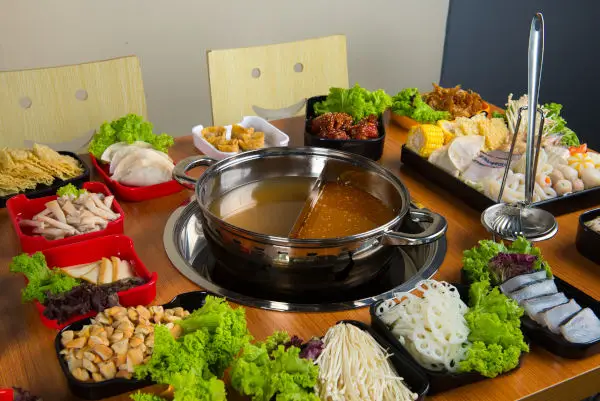
Regional Styles of Chinese Hot pot
While hotpot may be found all around China, the soup base and ingredients tend to vary by region. Naturally, everyone believes that the one they grew up with is the finest.
The three most prevalent hotpot styles are arguably Cantonese, Sichuan, and Beijing, but there are more. Let’s take a look:
Sichuan Hotpot (四川火锅) – Numbing and Spicy: The most well-known Chinese hotpot is Sichuan hotpot, which can be found in practically every city in China. It first appeared in Sichuan in the early twentieth century. It is well-known for its numbing and spicy flavor, which is derived from Sichuan pepper and other hot components such as chile.
There are two primary types of Sichuan hot pot, one from Chengdu and the other from the nearby municipality of Chongqing (see below), although both rely on chili and peppercorns to produce a mouth-numbingly hot flavor known as mala (麻辣).
According to common belief, Mala’s heating effects help residents beat the region’s hot summers and frigid winters.
Chongqing Hotpot (重庆老火锅) – Emphasis On The “Hot”: It’s worth mentioning that Chongqing hotpot differs slightly from the one served in neighboring Sichuan province, especially Chengdu.
This hot pot meal began in the 1020s in Jiangbei District, Chongqing, and the people of Chongqing claim that hotpot originated long ago in their city by boatmen along the Yangtze River.
Chongqing hotpot is most famous for its richly flavored soup and numbingly hot spice (málà 麻辣). It’s stuffed with a lot of beef tallow that’s been pre-fried with chili peppers. In general, the base of a Chongqing hot pot is made up of 60% beef tallow and 40% water. Furthermore, ginger, garlic, Sichuan peppercorn, and capsicum annuum are added, with no other cooking oils or spices.
Among the many things that go into Chongqing hotpot, fresh cow stomach (máodù 毛肚) is a common addition. Sesame oil is frequently used in dipping sauces as a means of tempering the spice.
Yunnan Hotpot (云南滇味火锅) – Spotlight On Mushrooms : Yunnan hot pot is another popular spicy hot pot meal in China. It has more fresh veggies, flowers you can eat, and different kinds of mushrooms.
90% of all mushroom species in China are found in the mountains of Yunnan Province in China’s southwest. Because of this, mushrooms are a common component of hot pot broth. Chili peppers are frequently put into the broth for additional spice, like in the nearby Sichuan province.
Its aromatic, fragrant, and spicy broth flavor distinguishes it from other types of hot pot. Additionally, it’s offered with a selection of dipping sauces made with sesame oil and chili.
This hot pot is popular among vegetarians due to its rich broth flavor, which can be enjoyed even without meat.
Yunnan Hotpot restaurants frequently provide a range of delicious side dishes, such as fresh mint salad or Yunnan-style fried crickets.
Related reading: Exploring China’s Culinary Diversity: China’s Regional Delicacies – Opens in new tab

Guizhou Hotpot (贵州火锅) – Sour Soup: Guizhou hot pot began with the Miao people of Guizhou during the Ming Dynasty. Its creation method is comparable to that of yogurt, which resulted from an error. In the process of preparing glutinous rice wine, a guy created the incorrect fermentation, resulting in the sour liquid that serves as the foundation of the hot pot. It immediately gained popularity among locals after it was discovered that it considerably increased people’s appetites after they tried it.
The water left over from boiling glutinous rice ferments to create the base soup for Guizhou hotpots. It has a little sour taste with the scent of glutinous rice and is quite tasty.
Guizhou sour soup comes in two varieties: red pot and white pot. The red Guizhou sour soup contains tomatoes, while the white version has glutinous rice fermentation broth. The white pot can fool you into thinking it’s not hot, but that would be a mistake. In reality, all Guizhou hotpots are loaded with Guizhou unique chili peppers; therefore, they are all spicy.
The red Guizhou hot pot first appeared around the end of the Qing Dynasty, because China had officially adopted tomatoes as a staple food at the time.
To create the basis of a Guizhou hot pot, you can add shallots, ginger, garlic, litsea, and other ingredients. River fish, shrimp, and mushrooms are other common components in this hotpot style.
Jiangsu-Zhejiang Hotpot (浙江火锅) – Flower Hotpot: The ‘Flower Hotpot’ is a particular style of hotpot from Jiangsu-Zhejiang cuisine that is popular in Hangzhou and Suzhou.
Typically prepared with chicken stock, the hotpot components are cooked alongside chrysanthemum petals to produce a taste that is gentle and tender.
“Flower Hot Pot” is also well-known in Suzhou and Hangzhou.
Do you want to learn more about Chinese cuisine? Check out these cooking books – Aff.link
Hainan Hotpot (海南火锅)- Coconut Milk and Chicken: Coconut chicken from the island province of Hainan, south of Guangdong, is a hot pot variety that is becoming more and more popular. It’s a hot pot with chicken broth and coconut milk. It’s usually not spicy at all, and people drink the soup to end their meal. The dipping sauce contains lime juice.
The climate of Hainan is mostly tropical. Coconut palms abound in plantations all across the island, and chicken is produced on various farms, giving rise to this one-of-a-kind form of hot pot.
This type of hot pot, which employs chicken and coconut milk as the primary broth components, has become more popular in China in recent years.
Cantonese Hotpot (打边炉)- Light with Fresh Seafood: In reality, the Cantonese name for “hot pot” is “beat side of furnace” (打边炉). This name dates back to a time when hot pot in the Cantonese style was eaten while standing up, and the pots used were made of pottery rather than metal.
Cantonese hot pot is typically made with fish. Because the temperature is hot and humid all year, spicy flavors are not desired. Light flavors such as spring onions, ginger, peanut oil, and soy sauce are used instead.
Fresh fish is essential. Fish balls, shrimp fillets, fish fillets, a little bit of pork, poultry, tofu, and veggies are all common components.
Chaoshan or Guangdong Hot Pot (广东火锅)- Beef Hot Pot: Chaoshan hot pot started around 1900, and the main soup base was sand tea sauce which was typical of the Chaoshan region. Although it did not appear until the early twentieth century, it became popular in many areas of China around 2015.
The main ingredient in this hot pot is beef, which comes from Shantou, a small city in the Chaoshan area. It’s based on beef bone soup or water, thus it’s comparable to Beijing hot pot in that the base soup is light and non-spicy, and the flavor of the components is the main attraction.
Similar to Beijing hot pot, Chaoshan hot pot is considered a high-end cuisine due to the quality of the ingredients that must be used.
Sand tea sauce is no longer used as the base of modern Chaoshan hot pot. Participants have the option of eating with sand tea sauce, which is more in keeping with the idea of a healthy diet.
Beijing hot pot (老北京火锅) -Lamb is king : Beijing is not only the capital of China, but also the capital of Northern-style hotpot. Beijing-Style Hot Pot is a Northern hot pot that is known for being simple and for using Mongolian copper pots. One of the most essential components on the menu is thinly sliced mutton.
This kind of hotpot is relatively simple and emphasizes the quality of the ingredients—tender, flavorful beef and fresh, green vegetables—rather than the broth. Ingredients are often boiled in clear water or a mildly flavored broth with the addition of scallions, goji berries, and ginger.
The majority of traditional Beijing hot pot restaurants provide Zhmajiàng (芝麻酱), a sesame-based dipping sauce. It tastes similar to Tahini sauce, but it’s a little sweeter and stronger.
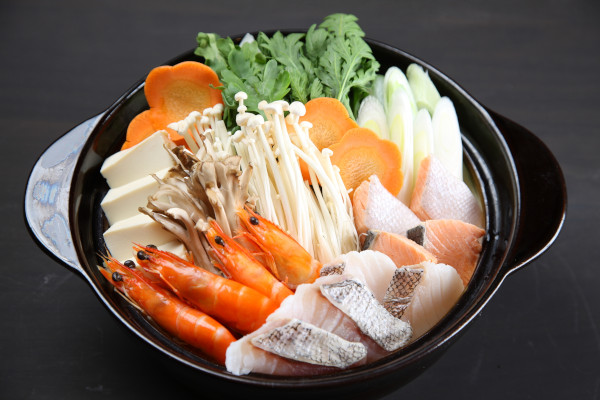
Is Hotpot Healthy?
With so many broths, meats, veggies, and seasonings to choose from, hot pot may be as nutritious as you want it to be. The soup base is one component that frequently crosses the line into a harmful area. Some soup bases, like those made in the famous Sichuan style, are oily and full of saturated fat and calories because they have a lot of animal fat and salt.
One way to avoid this is to choose a broth that is made from healthy ingredients, such as vegetables, herbs, tomatoes, or even soy milk. To reduce the quantity of salt or fat, create the soup base yourself rather than purchasing anything from a package that contains preservatives and other additives.
Because hot pot is all about personalization, a fantastic way to make it healthy is to include a greater variety of veggies, fish, and lean meats. Another excellent tip is to use a variety of herbs, such as cilantro and scallions. These are not only fantastic for your sauce, but they are also healthy.
Related reading: “10 Most Important Chinese Cuisine Cooking Methods“
What Equipment Do You Need for Hot Pot at Home?
A hot pot requires only two pieces of equipment: a burner and a pot.
- The burner must be portable enough to stand in the middle of your table. It may be anything you want, but avoid using charcoal since it can emit carbon monoxide into your home.
- Both a tabletop gas burner and an electric burner (coil or induction) are options. If you intend to make hot pot a regular occasion, I recommend purchasing a hot pot set with an electrical heating element built in—the pot is detachable for simple cleaning.
- A pot that sits stable over the heat source. To make it simple for guests to scoop out the cooked components, it should be quite shallow. If you want to take it a step further, get a split pot with a wall in the center to divide two distinct types of broth (often spicy and mild).
- Sauce Bowls: For each individual to put together their own dipping sauce, you’ll need small bowls (Chinese rice bowls work excellently).
- Plates for carrying various foods.
- Chopsticks. Use bamboo or wooden ones. Given that the hot pot broth is over the boiling point, plastic chopsticks may not be the best choice. Metal ones, on the other hand, would become too hot to grip. Chinese stores sell extra-long chopsticks for hot pot, although they are not required.
- Spoons with slots They’re useful for removing slick objects. You can, however, live without it. A long-handled spoon or a set of tongs might also suffice.
Related reading: “23 Chinese Cooking Utensils You Should Know“
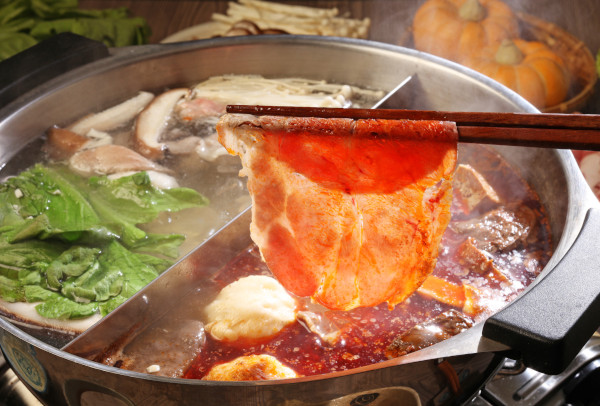
Common Hot Pot Ingredients
Typical ingredients for a hot pot include basic broth, meats, and other sources of protein, starches, veggies, and seasonings.
- Basic broth is created with spices, salt, and water.
- Thinly sliced lamb, cattle, goat, chicken, hog, and other fowl can be used as meats and proteins.
- Cellophane noodles, Chinese noodles, nian gao, or udon are examples of starches.
- Napaka cabbage, carrots, crown daisies, bok choy, bean sprouts, spinach, lettuce, daikon, mushrooms, potatoes and sweet potatoes, cilantro, and pumpkins are examples of vegetables.
- Meanwhile, condiments such as vinegar, soy sauce, cilantro, sesame butter, hoisin sauce, chopped garlic, minced ginger, white pepper, chili oil, sesame oil, shacha sauce, and others may be added.
- Depending on the type of hot pot, these ingredients may be different.
Related reading: “Basic Chinese Food Ingredients You Should Know To Start Chinese Cooking“
Set the Table for Hot Pot
Now that you’ve finished shopping and preparing, it’s time to set the table.
- Place the pot and the heat source in the center of the table. Pour the broth in. To avoid tripping, make sure any cables are properly organized.
- Place the ingredients on the table.
- Prepare the dipping sauces and place them in separate dishes. Keep some extra on hand in case someone needs an adjustment or top-up, such as scallions, coriander, fresh chili, chili oil, salt, and so on.
- Use small dipping bowls to stir up the sauce; you may even want two sauce dishes per individual!
- Arrange plates of food around the pot, as well as dipping sauce bowls, chopsticks, napkins, and beverages for each diner.
- Prepare a few dishes with tongs, hot pot strainers, and a ladle. It’s ideal to have one hot pot strainer per person, but if you’re excellent at sharing, you can get away with two.
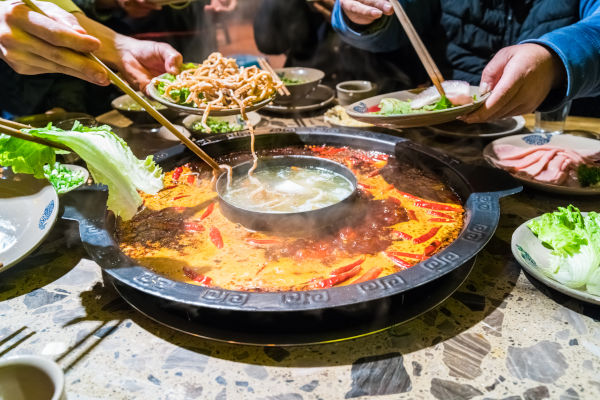
How to Eat Hotpot – Pro Tips
There are a few things to keep in mind when you and your buddies get started.
- Wait until the soup begins to boil before adding the dipping ingredients.
- Each time, add just a small portion of food. Adding too much food at once lowers the temperature of the broth substantially, making it take more time to cook through the food.
- The broth should ideally keep boiling throughout the meal. If the water is fiercely boiling, reduce the heat slightly.
- Remember that the meal will be hot when you take it out, so take your time.
- Cook umami-rich foods first, such as beef, seaweed, mushrooms, and so on, to enhance the taste of the broth.
- Check that items are well cooked before eating, but do not overcook. This is the most critical point, and many first-timers overlook it. Keep an eye on the food you’ve just added and remove it when it’s done.
- Cooking meat, fish, seafood, etc. for a short period of time is critical for maximum softness. They will become tough and chewy if left in the soup for too long.
- Starchy foods tend to thicken the broth, so cook them near the end of the meal.
- Also, do not keep them in the soup for any longer than is absolutely necessary. This guideline applies to all varieties of potatoes, sweet potatoes, noodles, and dumplings.
- Only prepare what you intend to eat. As a general guideline, you should only cook what you intend to consume. The host will occasionally prepare food for everyone. Or perhaps a buddy who is familiar with everyone’s tastes adds a few more items. However, most of the time, everyone cooks only what they intend to consume.
- After handling raw food (especially meat, fish, and seafood), immerse the tips of the chopsticks in boiling soup for a few seconds.
- Use the long cooking chopsticks or the hand-held baskets to get your food, so you don’t have to use the same tools to eat and cook.
Hot Pot Cooking Times
The most common cause of hot pot confusion is certainly this. In general, allowing everything to come to a boil before scooping food out is a decent rule of thumb. Additionally, for ingredients that come in a package, cook them according to the package directions.
Here Are Some Hot Pot Cooking Times:
| Ingredient | Cooking Time |
|---|---|
| Beef (thinly sliced or cut) | 30 seconds |
| Pork, Chicken, and Lamb (thinly sliced or cut) | 1-2 minutes |
| Seafood | 1-2 minutes |
| Oysters | 7 – 10 minutes |
| Lobster and crab | 5 minutes |
| Scallops | 5-7 minutes |
| Shrimps | Until curled into a C shape |
| Leafy greens | less than 1 minute |
| Starchy and root vegetables | Up to 15 minutes |
| Mushrooms | 1-2 minutes. |
| Dumplings/Balls | 2-4 minutes |
| Noodles | 30 seconds (pre-soaked), longer if dry |
| Tofu | 1-2 minutes |
What to drink with Hot pot
Because hot pot is a social event, you should anticipate ordering several drinks to keep the celebration going. The Chinese sorghum liquor báijiǔ (白酒) is a wonderful addition to any hot pot meal. If you’re looking for a milder drink to consume, we suggest getting a cold beer to help cool down the spicy flavors of your broth or dipping sauce. Try iced milk tea or warm herbal tea for a non-alcoholic beverage.
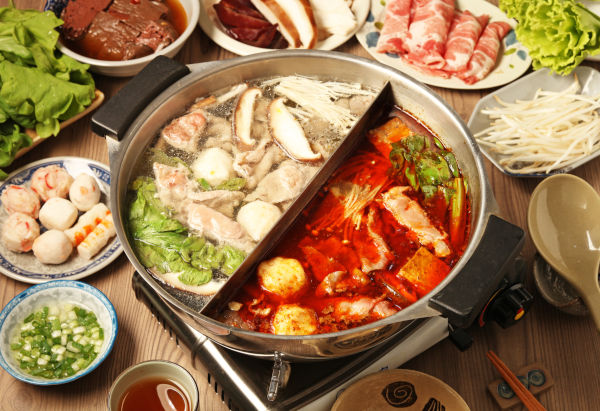
Chinese Hot Pot Safety Tips
- Always ask your hot pot participants if they have any food allergies, and avoid using those ingredients in the hot pot.
- Allow your hot pot to come to a boil before putting anything in it or taking anything out of it. If the water is not boiling, it may not be hot enough to destroy germs from raw meat.
- Unless you have a steel stomach, be sure your meal is well cooked.
- To be on the safe side, if in doubt, cook the dish for a bit longer.
- Use two sets of chopsticks, one for raw food and one for cooked food. You may also use various colors to avoid mixing them up!
- If you only have one set of chopsticks, always immerse them in a boiling pot after handling raw food. Once again, boiling broth kills microbes.
- People who haven’t used chopsticks before are strongly advised to practice first! You don’t want your meal to slide between your chopsticks and make a splash.
- If you’re still not sure how to use chopsticks, just use your hot pot strainer. Put food in the strainer using chopsticks, and then lower the strainer into the hot pot to start cooking.
- Do not throw anything into the hot pot that might splatter boiling hot soup on your friends.
- You should wait for root vegetables and tofu to cool down before eating them since they hold onto heat for a long time. If you’re using fried tofu balls, use your chopsticks to push out the broth so it doesn’t burn your mouth.
Related reading: Chinese Dining Etiquette and Table Manners – Opens in new tab
Hot pot FAQ
What is the most well-known hotpot brand in China?
While there are over 400 thousand hotpot restaurants in China (2018), China’s most famous hot pot restaurant is called Hǎi Dǐ Lāo Huǒ Guō (海底捞火锅), with around 1,300 restaurants in China, Hong Kong, Macau (2022).
Are hotpots vegetarian-friendly?
Yes, without a doubt! There are lots of vegetarian components, and if you have a large group, you may order one pot for the vegetarians and another for the meat eaters.
Is hotpot popular throughout the year?
Yes, it is. Hotpot is a year-round tradition for the Chinese, even in the hot summer months, but the freezing winter months bring a surge of visitors!
Is Shabu-Shabu the same as Hotpot?
Although hot pot and shabu-shabu appear to be the same, there are major differences. First and foremost, the hot pot comes from China, whereas shabu-shabu is completely Japanese. Although the two are sometimes confused because of the similarity of their components, shabu-shabu typically includes Japanese ingredients.
Do you want to learn more about Chinese cuisine? Check out these cooking books – Aff.link
Stay in Touch
 Join our newsletter by using the forms on this website or click here!
Join our newsletter by using the forms on this website or click here! Follow us on Google News
Follow us on Google News Follow us on Facebook
Follow us on Facebook
Featured Image from Depositphotos

